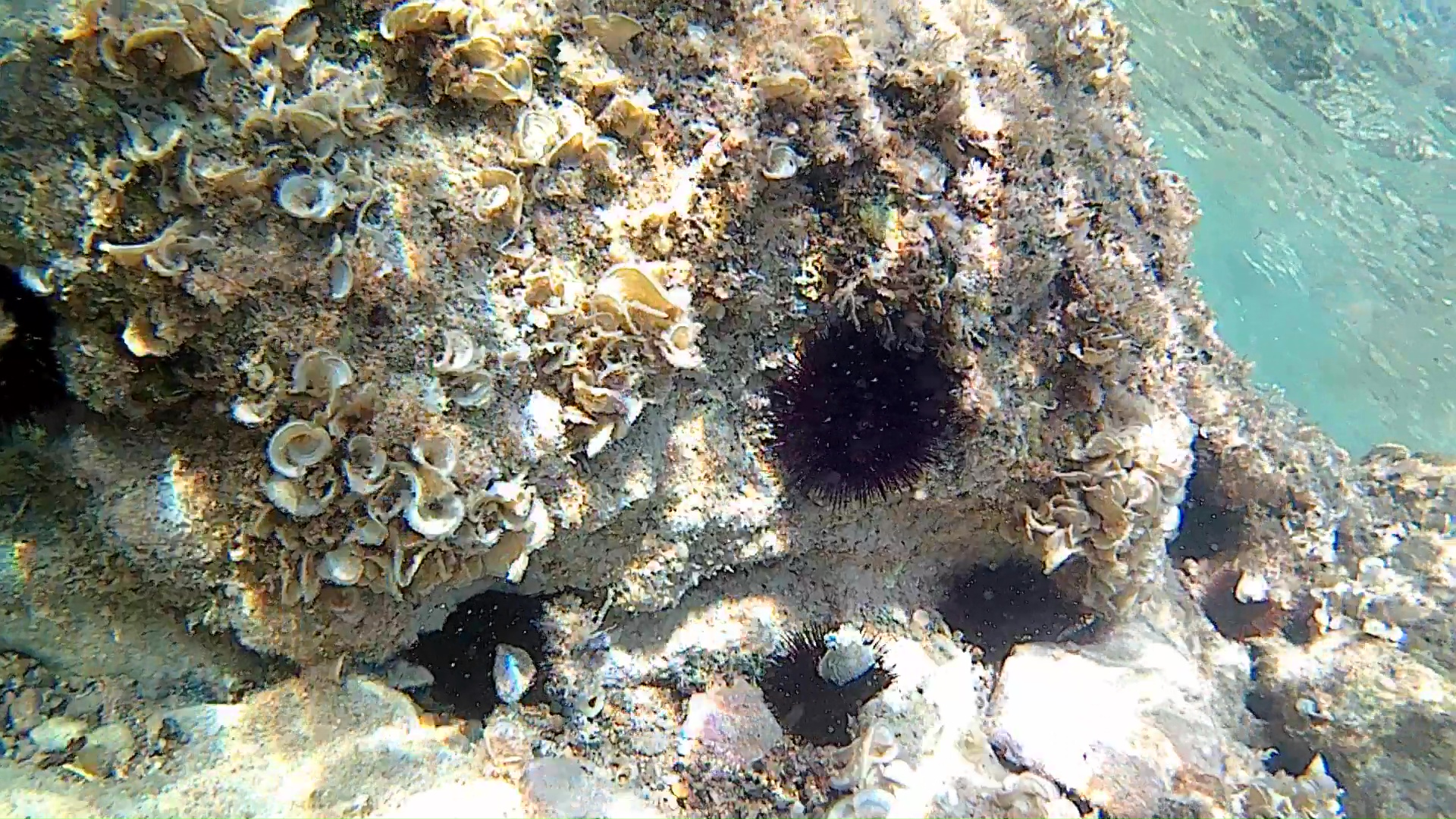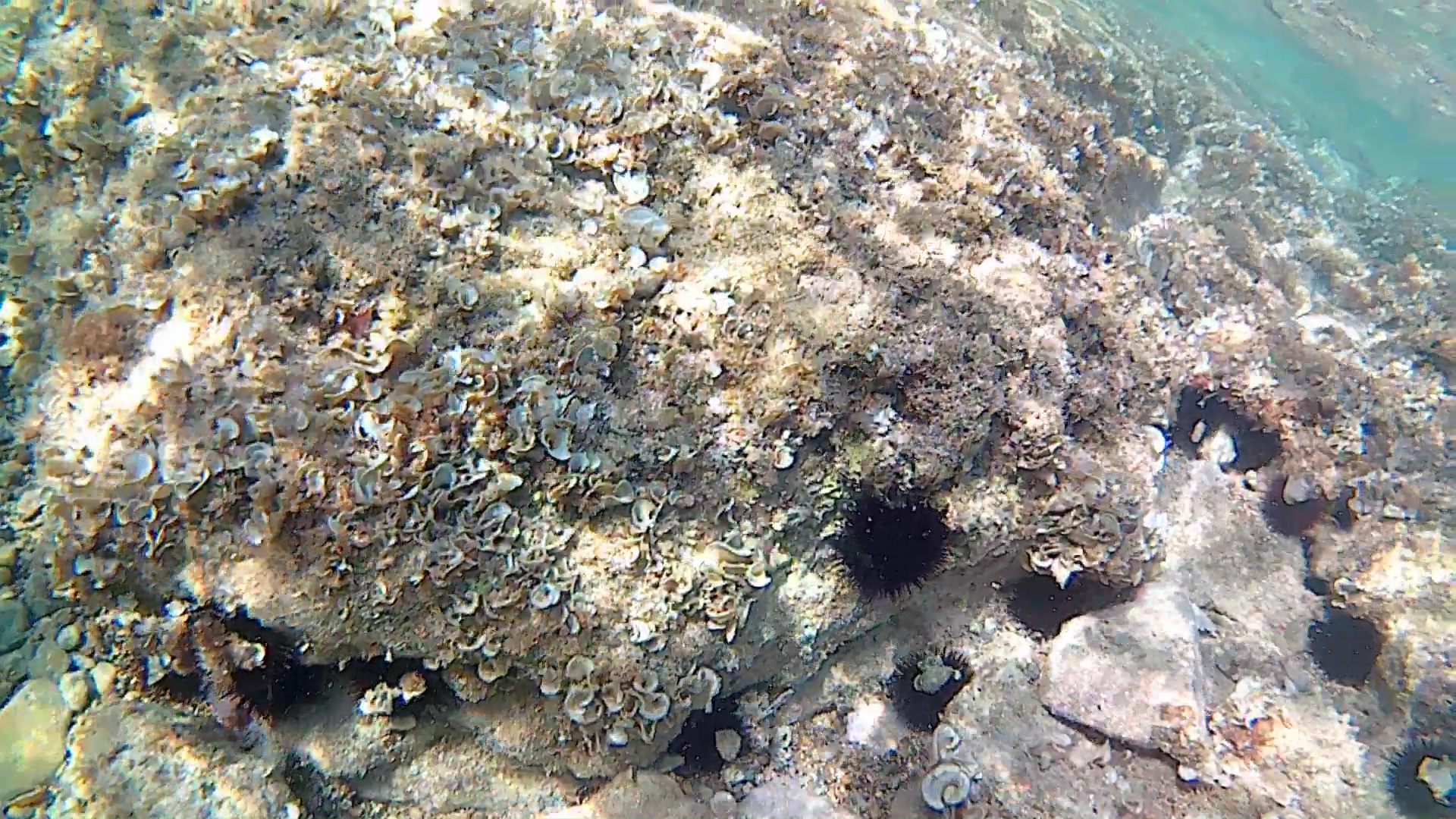Sea Urchins - Paracentrotus lividus

Sea urchins are part of the echinoderms, class Echinoids. The hedgehog (Paracentrotus lividus (Lamarck, 1816)) is a sea urchin of the Parechinidae family, often mistakenly referred to by the common name of female hedgehog. The common name derives from the erroneous belief that it is the female exemplar of Arbacia lixula, which is actually a different species. ricci di mare echinodermi riccio echinoderms sea urchin intotheblue.it
Distribution and habitat
P. lividus is found throughout the Mediterranean Sea and in the eastern Atlantic Ocean from western Scotland and Ireland to the Azores, Canary Islandsand Morocco. It is most common in the western Mediterranean, the coasts of Portugal and the Bay of Biscay, where the water temperature in winter varies between 10 and 15 °C.

P. lividus is usually found just below low water mark at depths down to twenty metres and sometimes also in rock pools. It is found on rocks and boulders, and in seagrass meadows of Zostera marina and Posidonia oceanica. Although Cymodocea nodosa is a preferred food item, it is seldom found in meadows of this seagrass, perhaps because the shifting sand substrate does not suit it or because of pressure from predators. In fact it avoids soft substrates and can sometimes be found clustered on stones or shell “islands” surrounded by sand.
In shallow or exposed waters it can use its mouth and spines to dig into soft rocks to create cavities into which it returns and in which it exactly fits. Where the urchins are numerous, the rock may be honeycombed by these excavations. Smaller individuals particularly use these retreats, which provide some protection from predators. In lagoons and rock pools, individuals are smaller than they are in the open sea. P. lividus is unable to tolerate low salinity. After exceptional quantities of rain fell in Corsica in the autumn of 1993, there was mass mortality of urchins in the Urbini Lagoon. However the urchin is relatively unaffected by organic pollution and heavy metals, in fact it flourishes near sewage outlets. There are wide swings in population densities over its range, which have not been completely explained. ricci di mare echinodermi riccio echinoderms sea urchin intotheblue.it
Description
Larva
The newly born hedgehog comes in the form of a small gelatinous larva of a few millimeters, bilaterally symmetrical, called pluteus, from whose body they branch off from 4 to 6 arms. This stage lasts from 4 to 6 weeks, during which the pluteus is transported by sea currents. ricci di mare echinodermi riccio echinoderms sea urchin intotheblue.it
Adult
Like the other echinoderms, it has a pentariated symmetry. It has a calcareous skeleton, improperly called shell, which can reach 7 cm in diameter, equipped with long movable quills and, on the ventral surface, many small extroversions with suction ends, called ambulacral pedicels, which allow them to move. The coloring can be of various shades of purple, brown and greenish.
The buccal apparatus consists of 5 mobile skeletal elements, each provided with a tooth. To breathe, use small gills that continuously pump water.

Biology
It feeds on algae but also on small animals and sponges, and is among the few organisms able to feed directly on the Posidonia oceanica leaves mainly at night. Even if it lives in the less deep and therefore brighter areas, it needs shade and then covers itself with pieces of Posidonia, pebbles and shells, which are held in place with the suction cup peduncles.
https://www.intotheblue.it/2017/10/08/riccio-di-mare/
